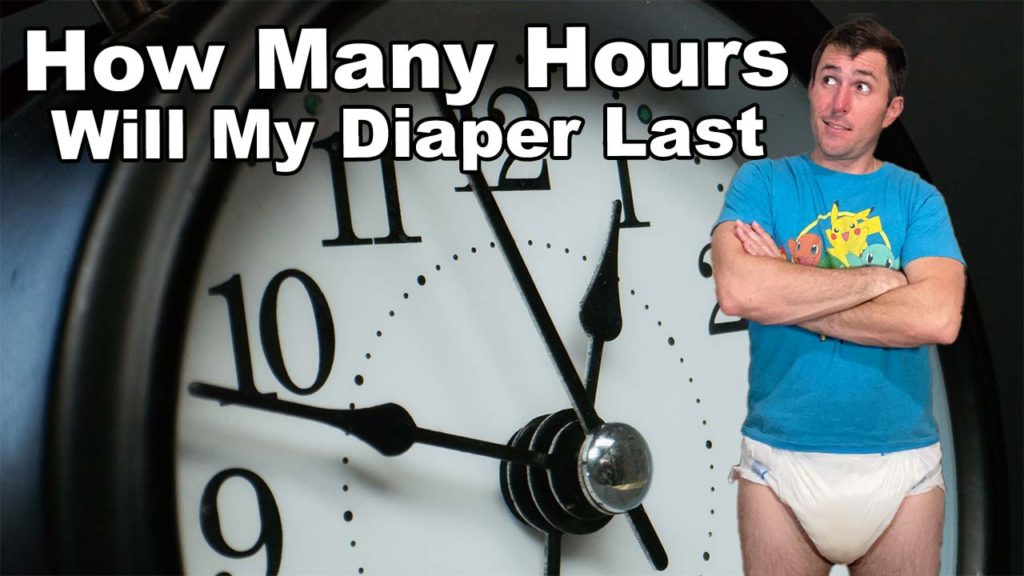
There are many different types of adult diapers that have different levels of absorbency. The level of absorbency will affect the average amount of time the diaper can be used for.
On average, you should expect to change a good quality diaper every 6 to 8 hours. Lower quality diapers need to be changed much more frequently at about 2 to 4 hours. The most common amount of time you can expect from most adult diapers is 6 hours.
Of course, while 6 hours is the average amount of time a diaper will last it helps to know more about all the different levels of absorbency. This might be a bit confusing at first but I have a few mental tricks that will help you out.
How Do You Tell a Diaper’s Level Of Absorbency?
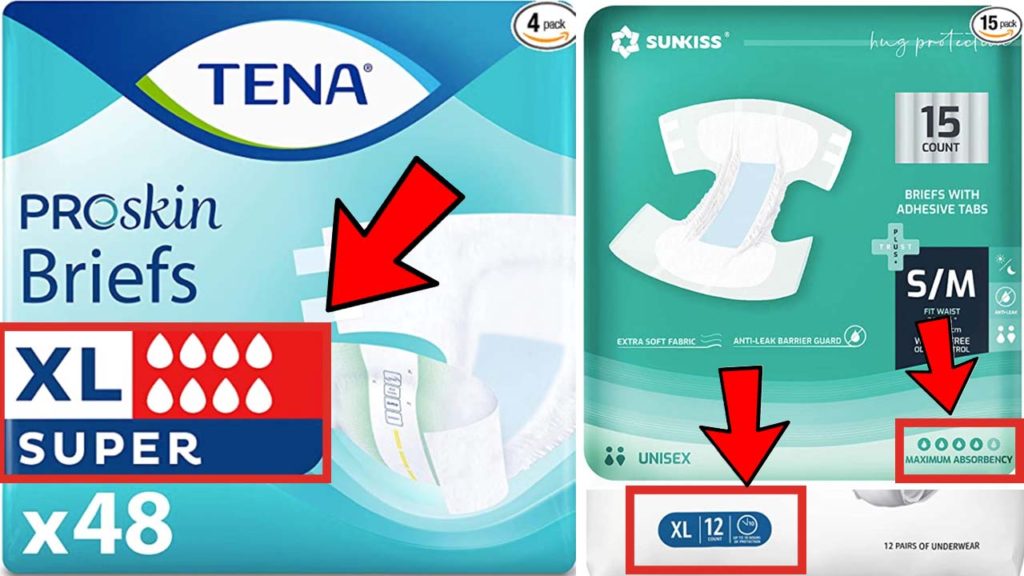
Almost all adult diaper brands offer multiple levels of absorbency. There are a few out there that don’t but of the ones that do, the various different levels of absorbency can be a bit confusing.
How do you know what you can expect from it much less if it is the one that would be the best for YOU?
Especially when every brand that has multiple levels of absorbency has its own unique way of identifying each absorbency level.
As an example, Prevail’s classifications are “extra absorbency”, “maximum absorbency”, “maximum plus”, “ultimate plus”, and “overnight absorbency”.
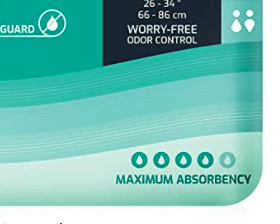
None of the Prevail packages have any visual identifier such as the commonly used 5 water droplets. The very lowest level of absorbency, from what I can tell, is the one labeled “extra absorbency”.
This makes absolutely no sense to me personally as I have no idea what the frame of reference is here for a base level of absorbency. What is the “extra” in reference to? Extra compared to what?
Now let’s compare that to Abena’s system which is much more clear cut and defined.
For both their medium and large size diapers in the Abri Form lineup they have absorbency levels 0-4. They are conveniently and intuitively named the letter of their size paired with the number level of their absorbency.
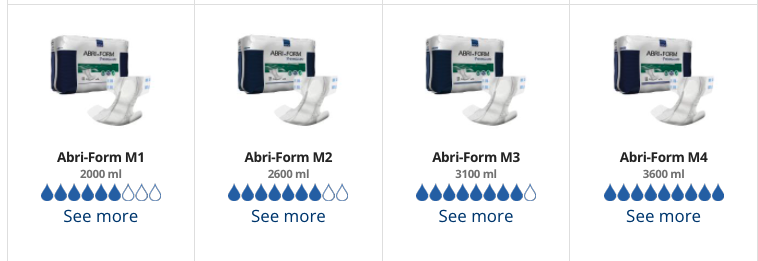
This is a far easier system to understand. It’s not hard to figure out 0 is the lowest level of absorbency while 4 is the highest. There is absolutely no confusion here or question about it.
That said, they have a 9 WATER DROPLET RATING SYSTEM! What?!? WHY?!?
This can certainly make things more confusing for anyone new to wearing adult diapers. Especially if they are shopping around and looking at a variety of diapers to choose from.
Tena products have an 8 water droplet visual identifier while Attends products go with a Light, Moderate, Severe, and Heavy scale.
Personally, I think the light to heavy scale is another one that works well. It’s easy to see at a glance whether or not this particular diaper is the MOST absorbent a product line has to offer or somewhere below that.
My personal favorite way to do it and what I consider to be the gold standard is the way that Northshore approaches this problem. I think that this approach should be the industry standard.
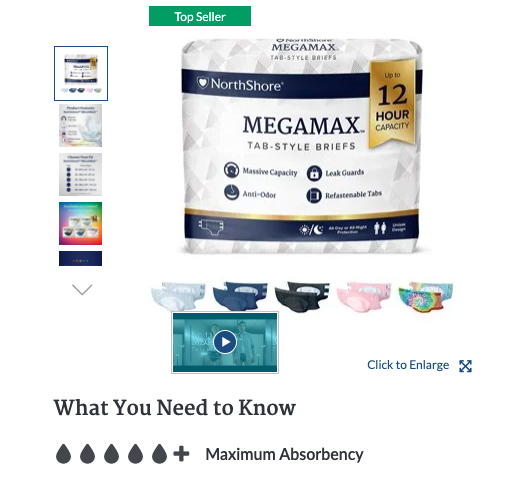
Here you can see that they put on the package or at least on the display image how many hours you can expect the diaper to last for. While I would contest their claim that the Megamax is good for 12 hours regularly it does at least get close to that.
Then below the image, they have the 5 water droplets with a plus sign indicating this is the most absorbent product that they offer.
These two things combined are the most useful approach as how long a product lasts for is far more meaningful to me than how much it can absorb. Unfortunately, many products out there make a time frame claim that I would not trust.
I think that the key way to think about it when it comes to any brand is to get an understanding of what they are calling their least absorbent product and their most absorbent product. By thinking of it in this way it’s a bit easier to decide on which one you should try out.
Keep in mind that one brand’s “most absorbent” product may not even compare to a different brand’s most absorbent product. Thanks to the lack of standardization when it comes to these measurements, it is really difficult for someone new to wearing diapers to determine which one they should go with.
Once you have a handle on a particular brand’s lineup of offerings, it’s up to you to take the product for a test run to see how well it holds up for you and your needs.
Another way to look at it is by what the product’s listed ML capacity is. The higher this number is, the more absorbent it is.
Unfortunately, this too is not a number that is always listed or easy to find. I also don’t find it to be a valuable frame of reference personally. It’s not like I’m able to measure the amounts of fluid coming out of me.
For me, the amount of time it will last is what is most important to me. The presented absorption capacity as well as the particular brand is what gives me an indication of that. Of course, knowing what brands generally perform well vs the ones that people say are garbage comes with time.
That’s where content like what I’m producing with the Diaper Dynamo brand all across the internet plays a vital role.
At the very least I, and other content creators like me, should be able to provide you with enough information to make an educated guess on what would work for you. We can steer you in the right direction towards the high quality products and tell you which products WE wouldn’t trust ourselves.
How Often Should Adults Change Their Diapers?
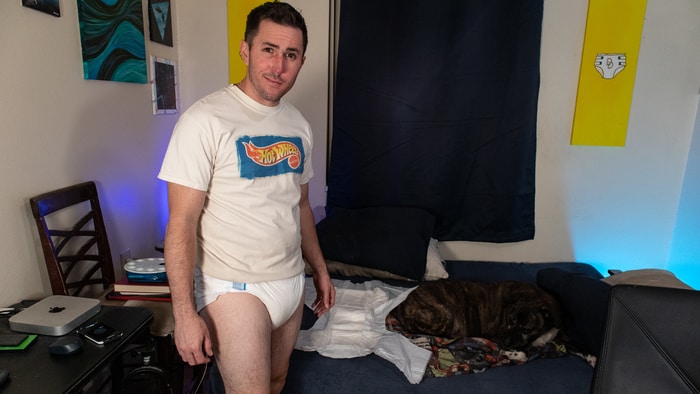
Now that we are aware that there are various different levels of absorbency, we can discuss more accurately how often you should be changing your diaper.
This naturally depends on the absorbency level of the product you are using.
Many of the most popular and most affordable products out there I would rate at around a 1 to 2 droplet absorbency rating. These would be products like Depend, Prevail, and Attends just to name a few.
The cheaper products usually are comprised of less material leading to low levels of absorption. These are also the same sorts of products often used in hospitals and other types of health care facilities.
All lower grade products like these need to be changed every 2 to 4 hours. You don’t want to be wearing products like these for too long as they get saturated quickly and will be more likely to leak if not changed.
Not to mention they will be more likely to lead to skin breakdown as well since they are not as good at pulling the fluid away from the skin.
Personally, for someone like me, these products are usually pretty great for exercising in. Since I sweat a lot when working out most of the fluid in my body comes out through my pores. This makes a thinner, more discreet product a viable option for the hour or so that I’m exercising.
Alternatively, if you have a lighter form of incontinence then lower quality products could last a lot longer for you. Especially if you’re still able to utilize the facilities when you make it in time.
The higher quality diapers that I usually recommend will last anywhere from 6 to 10 hours between changes. While the vast majority of people report they change on average about every 6 hours, there are many out there that don’t have to change for 8 to 10 hours.
I myself change my diaper on average after about 8 hours of wearing it. I certainly have had plenty of times where I’ve gone 10 to 12 hours too.
In general, expect to change a good quality adult diaper every 6 to 10 hours. So whether it’s your own diaper or the diaper of someone you’re taking care of, this is a good place to start until you get a better handle on your body’s needs.
How Many Diapers Does an Adult Go Through a Day?
If you’re wondering about the average amount of time an adult diaper can be used then the next logical question to ask after that is how many diapers will you need to use in a day?
It’s likely the reason you’re wondering how long a diaper lasts to begin with right? It’s an important number to know if you’re trying to make sure you are stocked up on supplies for the whole month.
If we go with the average number of hours we got from our multiple polls conducted then we would divide 24 hours by 6 and get 4 diapers.
| Wear Time | Diapers Per Day | Diapers Per Month |
| 2 hours | 12 | 360 |
| 4 hours | 6 | 180 |
| 6 hours | 4 | 120 |
| 8 hours | 3 | 90 |
| 10 hours | 3 | 90 |
| 12 hours | 2 | 60 |
If you’re like me and can get 8 hours per diaper then that’s 3 diapers every 24 hours. This comes to about 90 diapers a month.
If you end up going with the cheaper lower quality products you’ll need to change every 2 to 4 hours. This ends up being 6 to 12 diapers a day! This ends up being anywhere from 180 to 360 diapers a month!!!
That’s just nuts if you ask me.
I’m sure when we do a cost analysis on cheap products, their cost per diaper, and how many diapers are used in a day of that product, we will see that the more expensive high quality products end up being cheaper in comparison.
They save you money, time, and discomfort. They’re worth the higher cost to save on those things in the long run.
That a whole different topic to dive into more deeply on a different page.
